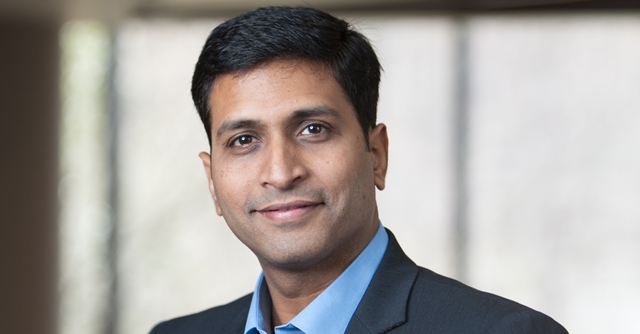
Augmented Reality: A new frontier in patient empowerment and healthcare delivery


Imagine exploring interactive 3D models of your own body, created from your MRIs, CT scans, and angiograms, to better understand your condition. This scenario, once confined to science fiction, is within our grasp thanks to the use of Augmented Reality (AR) in healthcare.
The AR-driven approach which shows the ‘art of the possible’ before a patient commits to a treatment plan, reflects the increasing focus on patient-centric care. Its significance hits home when we consider this grim statistic: 3 million deaths worldwide occur each year due to unsafe care.1 In this context, AR presents a novel and innovative approach to patient empowerment and improved treatment outcomes.
AR bridges the physical and digital worlds by creating immersive and interactive experiences that deepen patient involvement in their healthcare journey. With projections indicating the AR healthcare market will grow from $1.6 billion in 2022 to over $12 billion by 2031,2 it's evident that this technology will play an increasingly crucial role in patient care, education, and treatment.
AR's multifaceted role in modern healthcare

In surgical planning and execution, AR is pushing the boundaries of what's possible. For instance, before entering the operating room, surgeons can create digital models of patients' anatomies using AR, allowing them to simulate procedures and make critical decisions. Some pharmaceutical companies have even developed immersive digital simulations for surgeons to practice sub-retinal injections for ocular gene therapy.
This pre-operative planning enhances precision and improves patient outcomes. In the operating room, AR overlays can provide surgeons with real-time and critical information in their field of view, which will help in reducing complications. Studies suggest AR-assisted surgeries may reduce errors by up to 40%, which markedly improves patient safety.3
AR is further converting complex medical explanations into interactive visuals, allowing patients to explore their own anatomy, see how medications work inside their bodies, and follow step-by-step guides for at-home care. This clarity boosts patient engagement and treatment adherence, which is vital since globally, full compliance to chronic illness treatment is only 50%, with even lower rates in developing countries like India.4

Beyond surgeries, AR can also aid in identifying patients' veins for diagnostic tests or blood draws. In ophthalmology, AR enables the comparison of a patient's eye movements with 3D simulations to detect certain ailments.
In the field of telemedicine, AR bridges the gap between virtual and in-person care. It offers a way to enhance virtual consultations by providing visual aids that can make remote diagnoses more accurate and treatment plans more effective. This is valuable for patients in rural or underserved areas who may not have easy access to specialised medical care.
In a similar vein, picture your physical therapist as a high-tech coach, thanks to AR. It gives real-time feedback, helping you maintain proper form and track progress, which enhances therapy effectiveness, especially in rehabilitation. In pain management, AR offers immersive distractions to help patients cope with chronic pain or discomfort during procedures, providing a non-pharmacological alternative to opioids.
Navigating challenges and shaping the future of AR in healthcare

While AR's potential in healthcare is immense, its successful implementation in countries like India faces several infrastructural challenges. Last-mile connectivity remains a hurdle, especially in rural areas. According to a report, 93% of urban users access the internet daily, compared to 86% in rural areas.5 It points to a deeper problem—while India's major cities benefit from 4G and emerging 5G networks, many rural areas struggle with stable and high-speed connections, necessary for seamless AR experiences. This quality gap significantly impacts the reliability of AR-based telemedicine services in the regions where they could make the most difference.
But here's the encouraging part—some innovative solutions are already making waves. Take this government-funded oncology hospital, for instance. They've found a way to use AR-based telemedicine to connect city-based cancer specialists with rural patients. The results? They've managed to slash travel costs by half and reduced missed appointments by 60%. It's a perfect example of how AR can work wonders when implemented thoughtfully.
Security systems present another critical challenge. Healthcare data is sensitive, and AR applications require robust encryption and cybersecurity measures. While metropolitan hospitals might have sophisticated security protocols, smaller healthcare facilities often lack the resources for data protection systems. This creates vulnerabilities in the healthcare delivery chain, particularly when handling patient data across different locations.

This is where expert consultants step in to bridge these implementation gaps. Technology consulting firms like ZS bring valuable expertise in navigating both technological and infrastructural challenges. They help healthcare organisations develop tailored AR solutions that work within local infrastructure limitations while ensuring robust data security. Their comprehensive approach includes implementing strong encryption methods and access controls—integral elements for reliable telemedicine services. Meanwhile, by partnering with healthcare organisations in their adoption of AR, ZS helps them differentiate themselves in a competitive market, meeting the demands of tech-savvy patients while potentially attracting a broader patient base.
Looking ahead, the integration of AR with advanced technologies such as Generative AI and big data analytics promises even greater advancements. Healthcare providers could offer tailored treatment plans based on individual health profiles and real-time data. As these technologies mature, healthcare is poised to become increasingly predictive and patient-centric. We may soon see AI-powered AR assistants capable of early health issue detection and prevention. Indeed, the future of AR in healthcare ushers in a new era of medical care by reimagining the entire patient care journey, from prevention to treatment and beyond.

Mohit Sood
Mohit Sood is Regional Managing Principal at ZS
